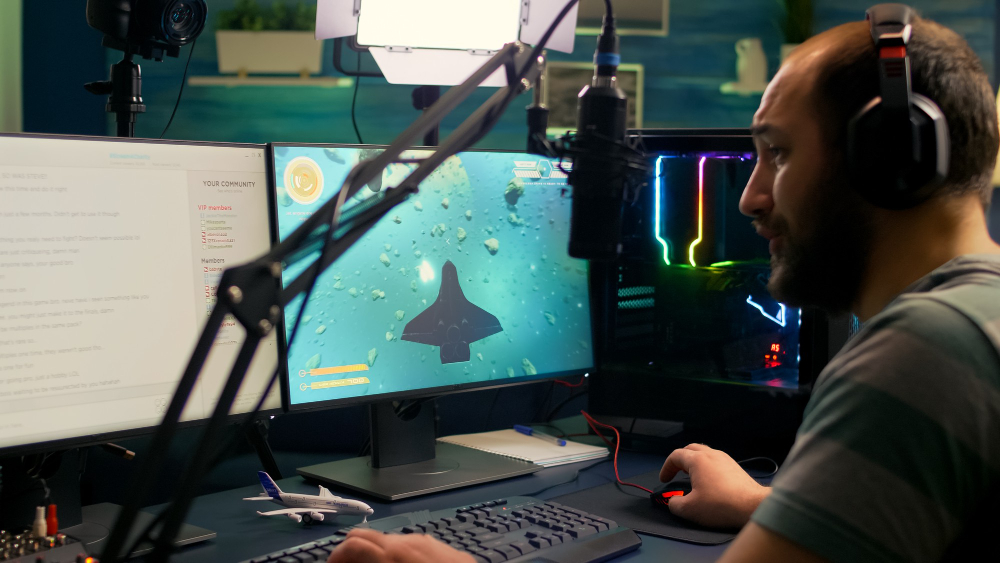Live streaming has become the heartbeat of digital communication in 2025. From content creators on Twitch to virtual events hosted by Fortune 500 companies, live streaming is no longer a niche—it’s a necessity. But with so many options on the market, each boasting unique features and selling points, the question remains: which software for live streaming is actually worth your time and money?
In this blog, we dissect the best options available, not just by popularity but by performance, user experience, and value. We’re diving deep into what makes live streaming software powerful or painfully overrated. And we’re not afraid to call out the hype.
Do you even need Fancy Live Streaming Software?
Before jumping into the top picks, ask yourself: Do I really need advanced software for live streaming, or am I paying for fluff? If you’re broadcasting once a month to 10 people, you might get away with a free solution. But if you’re serious about scaling your content, improving quality, and monetizing streams, investing in professional tools is non-negotiable.So, where does one draw the line between overkill and underprepared? That balance is exactly what we explore below.
The 10 Best Software for Live Streaming
1) OBS Studio: The Veteran Still Holding Strong
OBS Studio continues to dominate the open-source realm of live streaming. Despite being free, its capabilities rival many premium platforms. What makes it unbeatable for many creators is its high customization and robust plugin support. If you’re technically inclined, OBS gives you complete control over your broadcast.
However, the steep learning curve and lack of native support can be a deal-breaker for beginners. Still, for those willing to put in the time, OBS Studio remains a fan-favorite for DIY streamers and indie broadcasters.
2) Streamlabs: Tailored for Gamers and Influencers
Streamlabs, originally a fork of OBS, is designed with the modern-day streamer in mind. It integrates seamlessly with Twitch, YouTube, and Facebook. With built-in features like alerts, widgets, and donations, it simplifies the streaming process without compromising quality.
That said, Streamlabs has drawn criticism for monetizing open-source work without contributing much back. This controversy has led some creators to jump ship. But for many, the convenience outweighs the ethical debate.
3) vMix: High-End Production for Professionals
vMix is a Windows-only powerhouse. With support for 4K video, multi-camera inputs, instant replay, and live social media integration, it’s a favorite among live sports broadcasters and large-scale event organizers. vMix isn’t cheap, and it demands a powerful PC. But if you’re producing high-stakes content, this software is more than worth the investment. For businesses and agencies, it’s not just a tool—it’s a studio.
4) Wirecast: The Underdog With Studio-Level Features
Wirecast by Telestream often flies under the radar, but it deserves a spot in this list. It offers professional-grade tools like multi-source switching, virtual sets, and advanced audio mixing.
Despite its price tag and some performance complaints on lower-end machines, Wirecast is a solid choice for those who need broadcast-quality production without building a full studio.
5) XSplit Broadcaster: Simple Yet Feature-Rich
XSplit Broadcaster has carved out a niche as an intuitive, beginner-friendly platform that doesn’t skimp on functionality. Perfect for educators, vloggers, and occasional streamers, it supports all major platforms and has great customer support.
XSplit does fall short in customization compared to OBS and vMix. Its licensing model can also get expensive over time. But for ease of use, it’s hard to beat.
6) Restream Studio: Simplicity Meets Multistreaming Power
Restream Studio is a browser-based solution that excels in multistreaming. It allows you to go live on multiple platforms simultaneously without needing a beefy machine or complex setup.
While its customization options are limited, Restream is perfect for those who prioritize reach over production flair. Its simplicity is a double-edged sword—great for ease, limiting for creativity.
7) Lightstream: Cloud-Based Streaming with Creative Freedom
Lightstream brings a fresh approach with cloud-based production. It caters to console gamers and mobile streamers who want overlays, scenes, and guest interviews without hardware constraints.
It lacks the advanced features of desktop giants, but Lightstream shines in accessibility and innovation. If you’re always on the move, this might be your best bet.
8) Ecamm Live: Mac-Exclusive, Creator-Friendly
For Apple users, Ecamm Live offers a native Mac experience packed with features like picture-in-picture, screen sharing, and Skype integration. It isn’t available for Windows, which is a significant limitation. However, for Mac users looking for a clean, intuitive streaming experience, it’s a top contender.
9) PRISM Live Studio: Mobile-Friendly with Smart Features
PRISM Live Studio is a free app for mobile creators offering smart camera filters, real-time overlays, and multistreaming. It’s a great option for influencers and on-the-go streamers who want to upgrade from native social apps. While limited in advanced desktop capabilities, PRISM Live Studio brings pro features to smartphones in a surprisingly seamless way.
10) Twitch Studio: Designed for the Twitch Community
Twitch Studio is Twitch’s own broadcasting tool tailored for beginners on its platform. It simplifies setup, offers templates, and integrates chat and alerts easily. While not as advanced as OBS or Streamlabs, it’s a solid entry point for those who plan to stream exclusively on Twitch.
Why Popular doesn’t always mean better
Many creators blindly follow trends without truly evaluating whether the tools they use align with their individual goals and workflows. Just because everyone is raving about Streamlabs doesn’t automatically mean it’s the best fit for you. In fact, what works seamlessly for a gaming influencer might be completely unsuitable for a business running professional webinars. The best software for live streaming should be an extension of your creative and technical style—it should empower, not restrict.
Interesting Reads
Software for Subtitles and Captions





